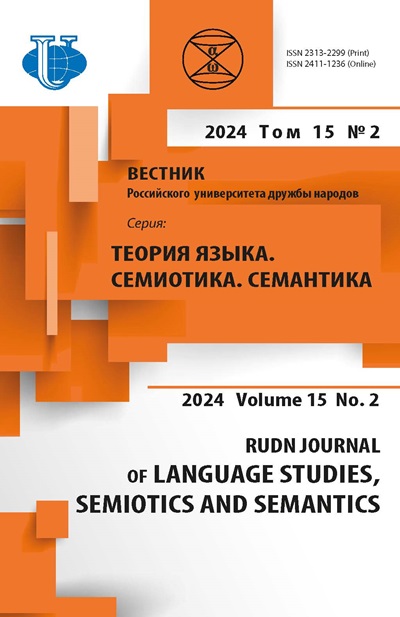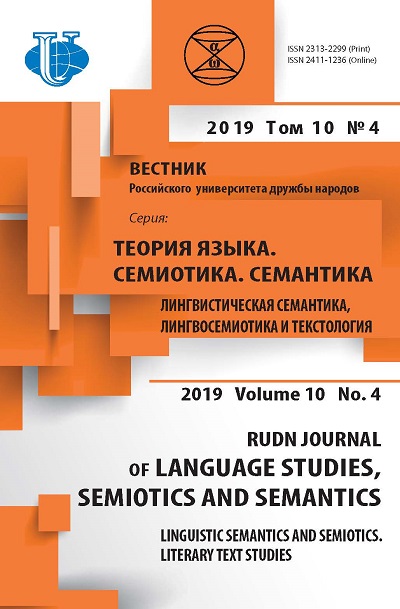Polysemiotic Elements of the State Emblems
- Authors: Maksimenko O.I.1, Khromenkov P.N.1
-
Affiliations:
- Moscow Region State University
- Issue: Vol 10, No 4 (2019): Linguistic Semantics and Semiotics. Literary Text Studies
- Pages: 947-956
- Section: SEMOTICS AND COMMUNICATION
- URL: https://journals.rudn.ru/semiotics-semantics/article/view/22778
- DOI: https://doi.org/10.22363/2313-2299-2019-10-4-947-956
Cite item
Full Text
Abstract
The national emblem of the country as one of three main symbols of the state can be considered as the polycode text including a verbal component (the motto, the name of the country) and iconic heraldic components. Presence on the arms potentially conflict elements (a figure of a bestiary, the weapon and so forth) can be perceived as latent conflictogenity. The article deals with linguosemiotic analysis of the arms of all world countries for their hypothetical conflictogenity. The results of the interpretation by recipients potentially conflict arms (national emblems) are given.
Keywords
About the authors
Olga I. Maksimenko
Moscow Region State University
Author for correspondence.
Email: maxbel7@yandex.ru
Doctor of Philology, Professor, Professor of Theoretical and Applied Linguistics Department
24, Vera Voloshina st., Mytischi, Moscow Region, Russian Federation, 141014Pavel N. Khromenkov
Moscow Region State University
Email: geleiter@gmail.com
Doctor of Philology, Associate Professor, Professor of Theoretical and Applied Linguistics Department
24, Vera Voloshina st., Mytischi, Moscow Region, Russian Federation, 141014References
- Gadamer H-G. (1988) Wahrheit und Methode. Moscow: Progress (In Russ.)
- Kassirer E. (2002) Philosophie der symbolishen Formen. SPb: (In Russ.)
- Losev A.F. (1993) Essay of antique symbolism and mythology. Moscow: Nauka (In Russ.)
- Maksimenko O.I., Khromenkov P.N. (2016) “Hate speech” concerning religious and secular communities. Moscow: Modern communicativistics (In Russ.)
- Pastoureau M. (2012) Une historie symbolique du moyen age occidientale. SPb.: Alexandria (In Russ.).
- Ricœur P. (2008) Conflict of interpretations: hermeneutics essay. Moscow: Kanon-Press-C: Kuchkovo pole (In Russ.)
- Huntington S. (2003) The crush of civilizations. Moscow: AST (In Russ.)
- Khromenkov P.N. (2015) Linguokonfliktological analysis of national anthems. Moscow: MGOU (In Russ.)













